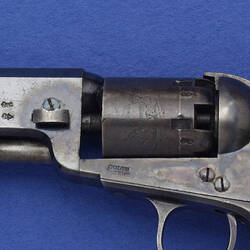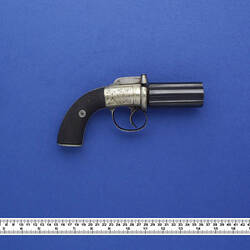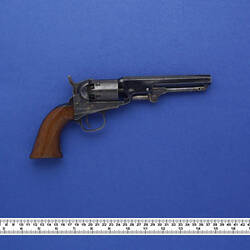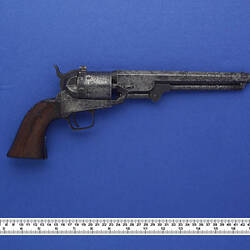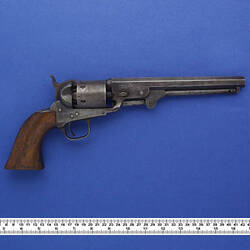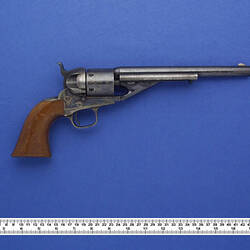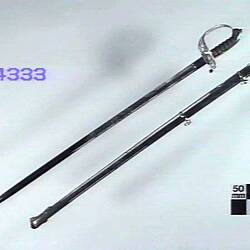James Watson Rosier was born in Langham, Suffolk, on the 22 December 1834, the eldest child of James and Elizabeth Rosier (nee Watson). When christened on the 1 February 1835, James the elder listed his occupation as a clock and watch maker. James Watson was followed by George (b.1837), Thomas (b.1839) and possibly Ann (b.1840) before the family moved from Suffolk to Bedford, Bedfordshire at some time during the early 1840s.
James appears in the 1841 census listed as a gunmaker, and having an apprentice working under him, but then appears listed as a watchmaker in March 1842 located in Pilcroft Street, and then in Castle Lane in 1844. Pickford (1991) notes that a daughter - probably Ann - was baptised in the Bedford Wesleyan Methodist circuit in February 1843, and other children of the family were educated at the Boys' and Girls' Elementary Schools. Ann was admitted to school in September 1847 and in the same year John William was born.
By 1847, James was listed in the directories as a gunsmith working in Offa Street, though de Witt and Nie (1978) suggest a starting date of 1846. On 1 September 1849 Rosier placed an advertisement in the 'Beds. Times' stating that he had disposed of his business to Henry Adkin - also a gunmaker - who later moved to High Street, Bedford. Ann left school on 26 September 1849, which is probably when the family left Bedford.
The family left for Australia aboard 'The Brothers' in mid October 1949, arriving in Adelaide on 13 February 1850 before continuing on at the end of the month to Melbourne, finally arriving on 10 March.
James Watson established a gunsmithing business in Melbourne at 125 Little Collins Street in 1857. It moved to 140 Brunswick St, Fitzroy around 1863, before returning to Melbourne to 32 Little Collins Street East (1864-1866), 45 Little Collins Street East (1867-1870), 66 Elizabeth Street (1871-1888) and finally to 63 Bourke Street West in late 1888 which subsequently was renumbered to 432 Bourke Street. The business remained at this address until sold at auction in 1916 to Donald Mackintosh, gunmaker.
In 1870 Rosier converted all 250 of the 1851 Colt Navy revolvers bought by the Victorian Police in 1864 to accept metallic cartridge ammunition under the Thuer patent. These guns are now commonly known as Thuer conversions. Though no Rosier markings are present, they are identifiable by both the conversion itself coupled with the Victorian Police markings. Most of the known examples have had their Thuer-converted cyclinder swapped back to the original percussion cylinder, although the museum collection holds examples of both configurations.
Rosier became gunsmith to the Victorian Rifle Association and in 1875 was appointed gunmaker to the Governor of Victoria. Subsequently he advertised 'Rosier' guns for sale which appeared to have been firearms retailed by him with his name engraved on them. Numerous examples of these appear listed in the 1916 auction catalogue of the business.During the hunt for the Kelly Gang (1878-1880) Rosier supplied the Victorian Police with Webley revolvers as well as the more unusual double-barrelled .50 calibre rifles, often mistaken for shotguns. In June 1879 Rosier supplied Ned's sister, Maggie Skillion, and his cousin, Tom Lloyd, with ammunition. Tom had purchased ammunition in the morning but returned in the afternoon on the pretence of needing more ammunition as part of a hunting party heading to French Island. Rosier supplied some useless examples of the required ammunition, but stated that the remainder was not in stock and would have to be brought in for the following day. The pair left a two pound deposit with the promise to return the following day. Rosier notified the police who staked out the shop, but the couple never returned, having caught the previous evening's train to Benalla. Although the train was searched, and Skillion and Lloyd detained and searched upon their arrival at Benalla, no ammunition was found - the ammunition believed to have been passed to one of Lloyd's friends, who had accompanied the pair to Melbourne.
James Watson Rosier married Nancy Richards in 1856 and they had ten children, including the eldest, James Watson Rosier junior, who would work in the business in the 1890s, before his hearing loss forced him to conduct most of his own work from home in Rusden Street, Elsternwick. He had a miniature rifle range constructed in the backyard so that he could test repaired firearms.
Due to his increasing age and ill-health, Rosier sold the business by public auction in 1916 to Australian gold-medal olympian and fellow gundealer, Donald Mackintosh. He died in South Yarra on 30 June 1920, and is buried in Boroondara Cemetery, near the family home in Fitzwilliam Street, Kew.
References
Corfield, Justin (2003). The Ned Kelly Encyclopaedia, Lothina. (There are several mistakes in this biographical entry.)
De Witt Bailey, Douglas A. Nie, (1978). English Gunmakers - The Birmingham and Provincial Gun Trade in the 18th and 19th Century, Arms and Armour Press.
Kenneally, J.J. (1945). The Complete Inner History of the Kelly Gang and their Pursuers, 4th edition, J.Roy Stevens, 1945.
Pickford, Christopher (1991). Bedfordshire Clock and Watchmakers, 1350-1880, Bedfordshire Historical Record Society, Vol.70. Suffolk Marriage Index, 1813-1837, Vol.8, Blackbourn Deanery, Suffolk Family History Society, 1998.
Thomas, Benjamin (2008). 'James Watson Rosier, 1834-1920: The oldest established Gunmaker in Melbourne', Caps and Flints, 20 (4).
More Information
-
Keywords
-
Localities
-
Authors
-
Article types


